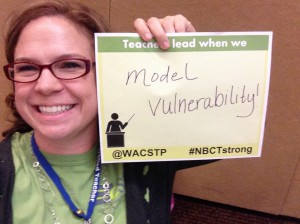Last December, David B. Cohen, an accomplished teacher-leader and blogger posted his five resolutions for teachers (and he re-tweeted that post recently, which got me started here this morning). This past year, I’ve had the chance to hear from some great thinkers and leaders, so that has me thinking about what we teachers ought to consider for our 2015 Resolutions. These are very “teacher-centric” as opposed to directly considering our students… but if we are our best as professionals and as a system, who benefits is clear.
Things for educators to consider in 2015:
1. Let’s change the way we talk about teaching. At the Spring NBCT Teacher Leadership Conference in Sun Mountain, Washington, our kickoff speaker, 2013 National Teacher of the Year and Zillah High School science teacher Jeff Charbonneau, got me thinking about this one. Too often, he pointed out, we teachers minimize the work that we do when we talk to other professionals. Too often, the conversation focuses on the “getting to play with kids all day” and “those three months [weeks] off for summer break,” or devolves into a gripe session about testing (see the next resolutions).
![By Christine Zenino from Chicago, US [CC BY 2.0 (http://creativecommons.org/licenses/by/2.0)], via Wikimedia Commons](https://storiesfromschool.org/wp-content/uploads/2014/12/800px-Venice_Fireworks_New_Years_Eve_5334256947-240x240.jpg)




